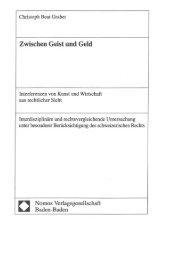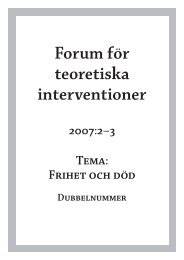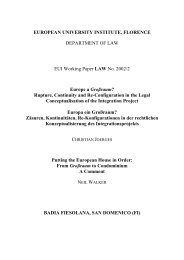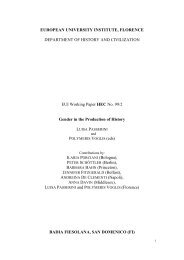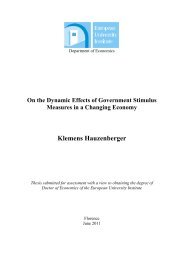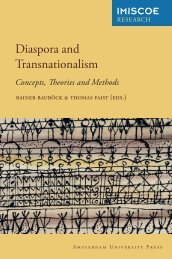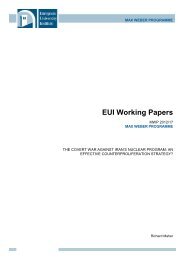Sinziana-Elena Poiana Ioana Lupea Irina-Madalina Doroftei Alina ...
Sinziana-Elena Poiana Ioana Lupea Irina-Madalina Doroftei Alina ...
Sinziana-Elena Poiana Ioana Lupea Irina-Madalina Doroftei Alina ...
You also want an ePaper? Increase the reach of your titles
YUMPU automatically turns print PDFs into web optimized ePapers that Google loves.
subject, part of the curriculum, starting in primary school and up to high school. According to the law,<br />
„Religion” was a required class in primary school, and optional in secondary school, high school and<br />
vocational school. Following a complaint by 57 members of the Chamber of Deputies, the<br />
Constitutional Court 64 decided that the provisions of the law should be understood as “requiring” only<br />
that religion be included in the curriculum.<br />
One can note, at that moment, the attempt to make religion, in its confessional form, a central and<br />
mandatory element of students' education, contrary to the principles of religious freedom. 65 At the<br />
same time, religious icons became ubiquitous in schools. The purpose and implications of the presence<br />
of religious symbols have not been publicly addressed until the year 2006, and no evaluation of the<br />
situation was conducted by the Ministry of Education.<br />
In Romania, 86.7 percent of the population declare themselves as orthodox. Today, the Romanian<br />
Orthodox Church has an overwhelming presence and power in influencing the religious education<br />
system. Even though the provisions concerning religious education in the Romanian Constitution<br />
cover all 17 recognized (religious) denominations 66 , in essence, the presence of religious symbols is<br />
basically the case concerning religious icons. Where great confessional diversity exists, religious<br />
symbols are not displayed. Investigations taking place in Tirgu Mures show that in schools where<br />
Catholic, Orthodox, and neo-Protestant believers exist in comparable numbers, religious symbols are<br />
missing. However, the subject of students' participation in religion classes has been raised by some<br />
parents. Parents are often in situations where they have difficulties in dealing with problems that arise<br />
from the teachers' dogmatic attitude. In one of the cases under investigation in Tirgu Mures, a first<br />
grade girl was traumatized by the public ridicule she was subjected to by her roman-catholic teacher.<br />
Everything started from the different way in which Protestants versus Catholics cross themselves. 67<br />
Emil Moise's petition to the National Council for Combating Discrimination<br />
Although (religious) icons have invaded schools, having an overwhelming visibility in the corridors,<br />
the religion laboratories and the classrooms, the implications of the presence of religious icons within<br />
the educational institutions have not been noticed at the level of decision makers and public opinion.<br />
Some understanding of the issues existed only within several NGOs involved in promoting tolerance<br />
within ethno-culturally diverse communities. The Pro Europa League pointed out as early as the<br />
beginning of the `90s the discriminatory potential of the religious education classes and the display of<br />
religious symbols in public educational establishments. 68<br />
On August 12 th 2006, Emil Moise, who taught philosophy at high-school level, father of a student at<br />
the „Margareta Sterian” Arts High-School in Buzau, sent a petition to the National Council for<br />
Combating Discrimination (NCCD) in which he requested, as a representative of his daughter, „a<br />
repeal of the discriminatory situation created by the presence of religious symbols in public schools”. 69<br />
Mr. Moise had two arguments: (a) the discrimination against agnostics and people of a different<br />
confession than that represented by the religious symbols affects the children's autonomous and<br />
creative personality development; b) acceptance of religious symbols, and specifically of Christian-<br />
Orthodox ones, can enforce the idea of the inferiority of women, and hence infringes upon equality of<br />
chances.<br />
64 Complaint of June 25 th 1995.<br />
65 Including religion classes that are both mandatory and confessional infringes, according to the European Court of<br />
Human Rights (ECtHR) jurisprudence, the provisions of art. 8 of the European Convention on Human Rights.<br />
66 Beginning with 2003, the Jehova's Witness organization has also become a recognized (religious) denomination.<br />
67 Interviews with J.K.<br />
68 Interviw with S.E.<br />
69 Considers their presence lawful only in religion laboratories, or during orthodox religion classes.<br />
43



